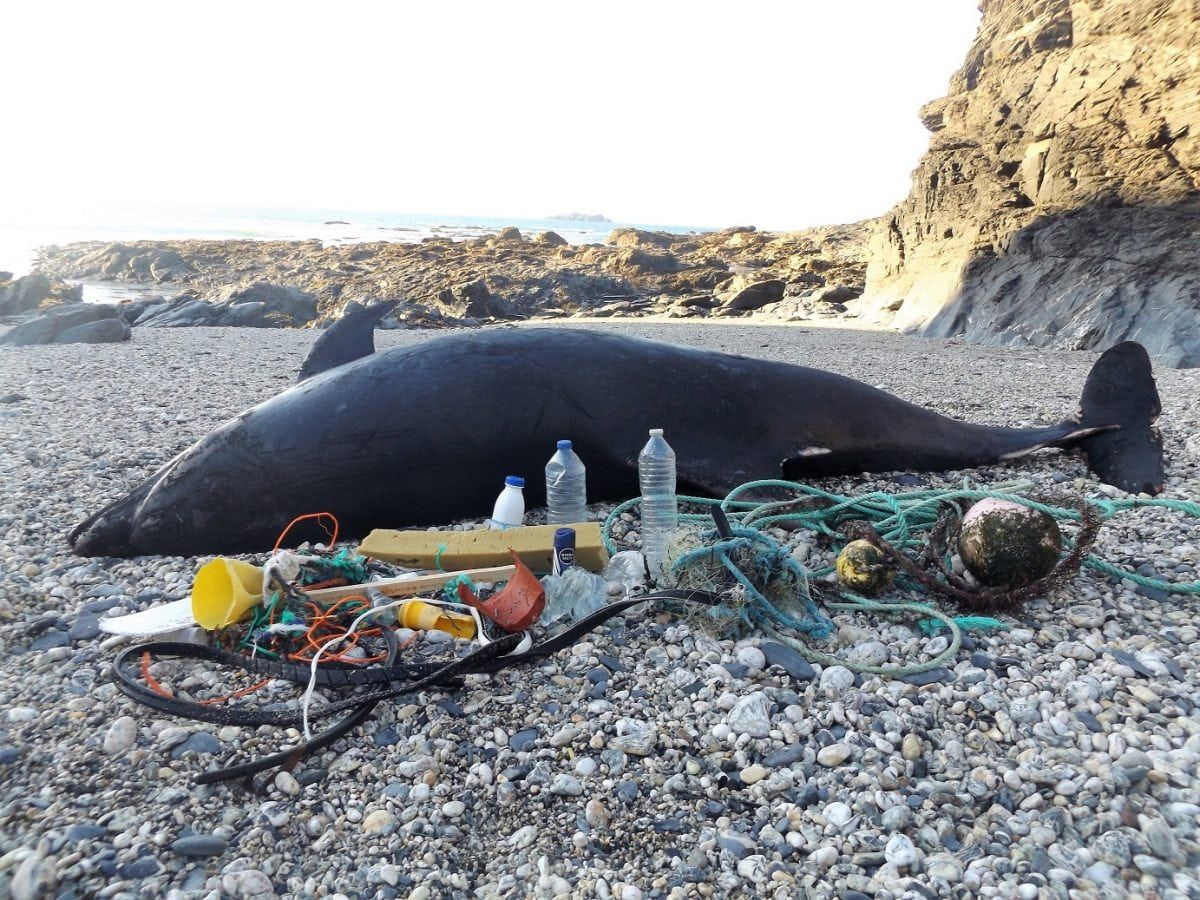
This shocking photo shows the devastation caused by rubbish thrown in the sea – a dead dolphin washed up in Britain surrounded by the waste which may have killed it,
The sad picture shows a dead bottlenose dolphin next to a pile of plastics, rope, bottles, flower pots, deodorant cans and wiring.
Local man Rob Stevenson and children, Emily, 19, and Alex, 20, found the dolphin along side the rubbish in Trevone Bay in Cornwall.
It is estimated there are 13,000 pieces of plastic litter per square kilometre of the world’s oceans.
Around the globe an estimated one million birds and 100,000 marine mammals and sea turtles die each year when they become trapped in plastic or eat it.
Rob and his kids had been down at their local beach collecting rubbish when they stumbled across the huge mammal.
Salesman Rob said: “We go down to the local beaches and do littler picks regularly.
“When we went down we were shocked to see this dead bottlenose dolphin.
“Experts have said it is a fully mature adult bottlenose dolphin, which is quite rare.
“There was rubbish everywhere. I think everyone is fed up with the amount of plastic that goes into the sea.”
Rob, of Padstow, Cornwall, added: “You see more and more autopsies on whales and dolphins and they cut the stomachs and there’s plastics in there.
“That’s what this picture visually represents. If you can find these two things washed up together is it a coincidence?”
This morning 12 volunteers helped the Cornwall Wildlife Trust move the dolphin to another location.
A spokesman said it will now be picked up by the charity undergo an autopsy.
He said: ”The bottlenose dolphin at Trevone has been retrieved for post mortem today so we may be able to confirm a cause of death.”